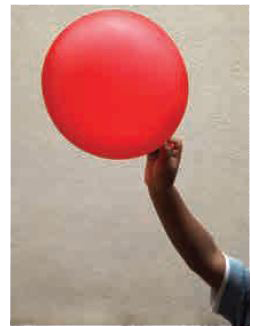Express the constant k of Eq. (8.38) in days and kilometres. Given k = 10–13s2m–3 . The moon is at a distance of 3.84x×105 km from the earth. Obtain its time-period of revolution in days. Solution in Tamil
Given
K = 10−13s2m−3
=10−13[1(24×60×60)2d2][1(1/1000)3km3]
=1.33×10−14d2km−3
Using Eq. (8.38) and the given value of k, the time period of the moon is
T2=(1.33×10−14)(3.84×105)3
Not that Eq. (8.38) also holds for elltpttcal orbits If we replace (RE+h) by the semi- major axis of the elltpse. The earth. will then the at one of the foct of this ellipse.
Topper's Solved these Questions
- GRAVITATIONBOOK - NCERT TAMILCHAPTER - GRAVITATIONEXERCISE - EXERCISES
27 Videos
- GRAVITATIONBOOK - NCERT TAMILCHAPTER - GRAVITATIONEXERCISE - ADDITIONAL EXERCISES
4 Videos
- APPENDIX 1BOOK - NCERT TAMILCHAPTER - APPENDIX 1EXERCISE - SOLVED EXAMPLE UNIT-5
14 Videos
- HEAT AND THERMODYNAMICSBOOK - NCERT TAMILCHAPTER - HEAT AND THERMODYNAMICSEXERCISE - EVALUATION (Numerical Problems)
13 Videos
Similar Questions
You can shled a charge from electrical forces by putting it inside a hollow conductor. Can you shield a body from the gravitational influence of nearby matter by putting it inside a hollow sphere or by some other means ?
View SolutionAs you have learnt in the text, a geostationary satellite orbits the earth at a height of nearly 36,000 km from the surface of the earth. What is the potential due to earth’s gravity at the site of this satellite ? (Take the potential energy at infinity to be zero). Mass of the earth =6.0×1024kg. radius=6400km .
View SolutionThree particles of masses m1=1kg,m2=2kgandm3=3kg are placed at the corners of an equilateral triangle of side 1m as shown in Figure. Find the position of center of mass.
View SolutionCalculate the number of moles of air is in the inflated balloon at room temperature as shown in the figure

The radius of the balloon is 10 cm, and pressure inside the balloon is 180 kPa.
View SolutionGiven that T^(2) = kR^(3) , express the constant k of the above relation in days and kilometres. Given, k= 10^(-13)s^(2) m^(3) . The Moon is at a distance of 3.84 xx 10^(5) km from the earth. Obtain its time period of revolution in days.
View Solutionसमीकरण (8.38) में स्थिरांक k को दिनों तथा किलोमीटरों में व्यक्त कीजिए। k=10−13s2m−3 है। चन्द्रमा पृथ्वी से 3.84×105km दूर है। चन्द्रमा के परिक्रमण के आवर्तकाल को दिनों में प्राप्त कीजिए ।
View SolutionGiven that T2=kR3, express the constant k of the above relation in days and kilometres. Given, k=10−13s2m−3. The Moon is at a distance of 3.84×105km from the earth. Obtain its time period of revolution in days.
View Solutionपृथ्वी को तोलना : आपको निम्नलिखित आँकड़े दिये गये हैंg =9.81m/s2, RE =6.37x106 m पृथ्वी से चन्द्रमा की दूरी R= 3.84x108 mपृथ्वी के परितः चन्द्रमा के परिक्रमण का आवर्तकाल = 27.3 दिन। दो भिन्न विधियों द्वारा पृथ्वी का द्रव्यमान प्राप्त कीजिए
View Solutionसमीकरण T2=K(R+h)3 जहाँ k=4π2GM−K में स्थिरांक K को दिनों तथा किलोमीटरों में व्यक्त GM कीजिए। K=10−13सेकण्ड2मीटर3 है। चन्द्रमा पृथ्वी से 3.84×105 किमी. दूर है। चन्द्रमा के परिक्रमण के आवर्तकाल को दिनों में प्राप्त कीजिए।
View Solutionसमीकरण T2=K(R+h)3 जहाँ K=4π2GM में स्थिरांक K को दिनों तथा किलोमीटरों में व्यक्त कीजिए। K=10−13s2m−3 है। चन्द्रमा पृथ्वी से 3.84×105 किमी. दूर है। चन्द्रमा के परिक्रमण के आवर्तकाल को दिनों में प्राप्त कीजिए।
View SolutionExpress the constant k of Eq. (8.38) in days and kilometres. Given k = 10–13s2m–3 . The moon is at a distance of 3.84×105 km from the earth. Obtain its time-period of revolution in days.
View SolutionExpress the constant k of Eq. (8.38) in days and kilometres. Given k = 10^(–13) s^(2) m^(–3) . The moon is at a distance of 3.84 x× 105 km from the earth. Obtain its time-period of revolution in days.
View SolutionGiven that T2=kR3, express the constant k of the above relation in days and kilometres. Given, k=10−13s2m−3. The Moon is at a distance of 3.84×105km from the earth. Obtain its time period of revolution in days.
View SolutionExpress the constant k of Eq. (8.38) in days and kilometres. Given k = 10–13s2m–3 . The moon is at a distance of 3.84x×105 km from the earth. Obtain its time-period of revolution in days.
View SolutionFind the value of k in equation in day and kilometer. k=10−13s2m−3 The distance of artificial satellite from earth is 14R. Where Re = radius of earth. Find its time period.
View Solution